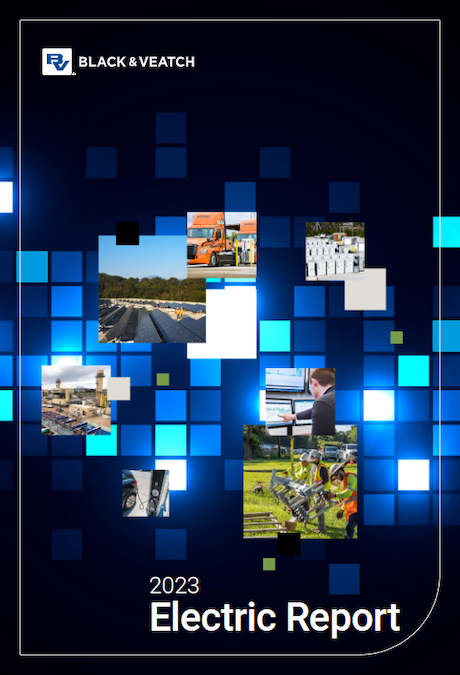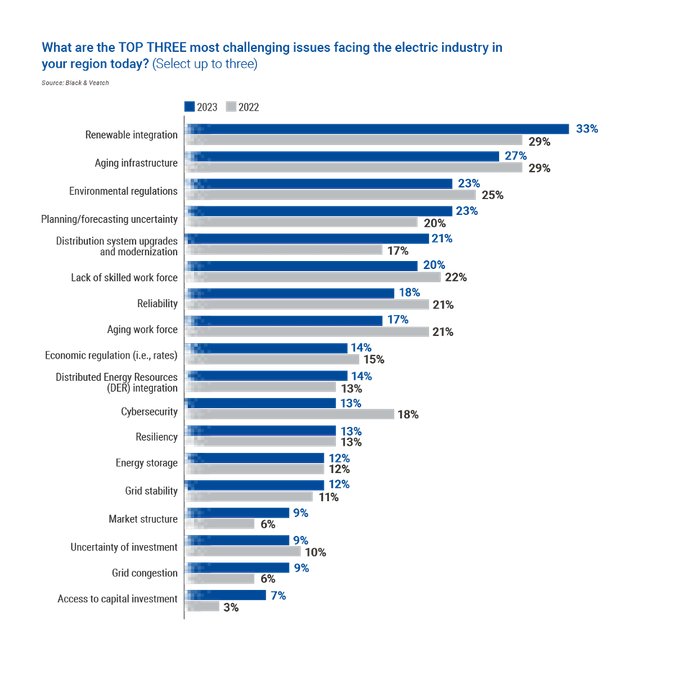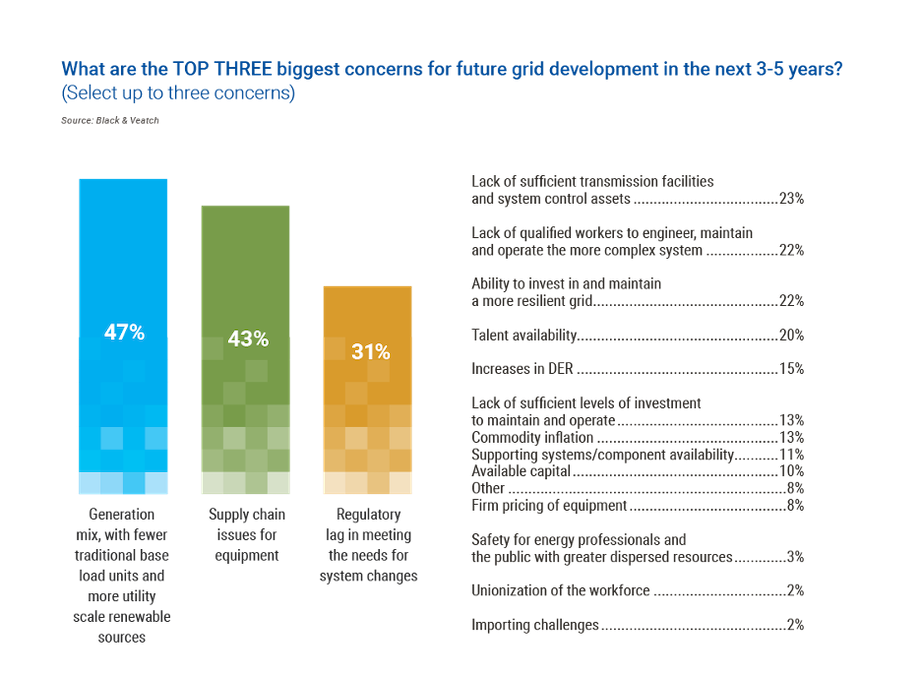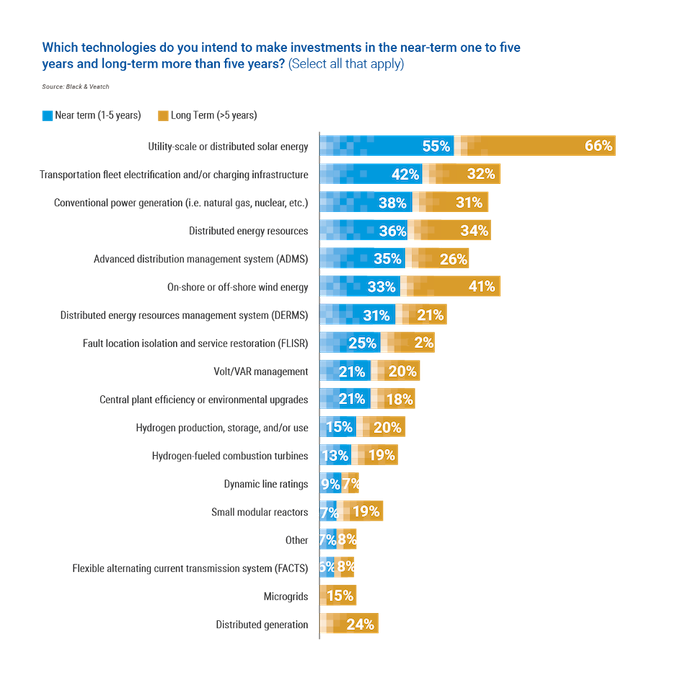Amid Energy Ecosystem’s Evolution, U.S. Electric Sector Navigates Headwinds, Opportunities
Published 10-25-23
Submitted by Black & Veatch

By Laszlo von Lazar, Black & Veatch
Megatrends compounding challenges of an already complex, evolving U.S. electric sector are stoking an urgent call for changes.
More companies and communities are pursuing clean energy and transportation solutions to serve their near-term decarbonization goals, stoking the need for practical, tactical plans with intensifying scope and ambitions. As renewable energy proliferates, electric utilities must accommodate it onto an aging grid. Electric vehicle (EV) adoption is accelerating, raising legitimate questions about whether this aging grid system will meet the rising demand. Cyber threats that exploit vulnerabilities aren’t abating.
In the interest of electric system resilience and reliability, the industry may be at an inflection point with an infrastructure in need of upgrades, if not reinvention.
In many ways, grid modernization – or “grid mod” – is an imperative. It ensures the nation’s sprawling electrical transmission and distribution network will be up to the task of handling ever-increasing renewable energy, the volatility of floods, droughts and wildfires fueled by climate change, and the EV segment’s growing appetite for electrons, among other things.
Black & Veatch’s 2023 Electric Report – drawing upon expert analyses of a survey of more than 650 U.S. energy industry stakeholders – illustrates that modernizing commonly is a matter of money, with utilities searching out the most cost-effective ways to decarbonize their energy portfolios. Federal legislation signed into law in recent years is meant to ease the burden, devoting a generational influx of billions of dollars in available funding and tax credits to upgrade the grid. Only now is that infusion for such things as climate mitigation, clean energy projects and other zero-emissions technologies beginning to flow.
As the report makes clear, modernizing the grid gets more doable when many things align. And for now, things such as supply chains, workforce availability and regulatory lags simply aren’t cooperating.

Renewables and the Grid
In March, the U.S. Energy Information Administration reported that U.S. electricity from renewable sources – largely from the wind, sun and hydro – surpassed coal-fired generation for the first time.
Renewables again outranked nuclear power generation in 2022 for the second consecutive year as energy from coal continued its slide, from 23 percent in 2021 to 20 percent last year as more coal-fired power plants were retired and those that remained got less use. By 2050, the EIA forecasts solar and wind power will account for 40 to 69 percent of U.S. electricity generation.
Fanning the growth of renewable energy has been the sizable drop in the cost of producing wind and solar power – including the sharp decline in the price of solar photovoltaic cells – as well as customer decarbonization goals. That growth is despite the downside that solar and wind power is prone to intermittency – the lack of energy produced when the sun isn’t shining and the wind isn’t blowing – and must be paired with batteries or other energy storage types.
One-third of respondents cited integrating renewable and distributed energy resources onto the grid as their enterprise’s foremost challenge, edging aging infrastructure by 6 percentage points. That’s especially notable, given that aging infrastructure had ruled the list of top industry headaches for years before renewable integration suddenly tied it last year.

Resilience and Reliability: The Need for Grid Mod
The breadth of the U.S. electric grid invites questions about the aging grid’s resilience and reliability, amplified by rising concerns about outage-causing extreme climate events, greater load demands for a rapidly expanding EV segment, and the proliferation of such things as energy-intensive cloud computing and data centers. That’s in addition to questions about the grid’s ability to accommodate more renewables in a decarbonizing world.
The issue now is choosing the path forward.
When it comes to the industry’s biggest concerns for developing the grid in the short term – three to five years – respondents cited as their largest concern (47 percent) the issue of their generation mix, with fewer traditional base load units and more utility-scale renewable sources. That narrowly edged the frustrations of procuring what’s needed for much-needed grid modernization in a bottlenecked supply chain; in a separate question, seven in 10 respondents said their organization’s resilience and reliability projects are impacted by the availability of components for transmission and distribution improvements.
For now, the survey shows the industry’s mindset is centering on decarbonization, with renewable energy at its core. When asked what technology investments they’ll be prioritizing in the immediate future – the next one to five years – respondents cited utility-scale or distributed solar energy (55 percent) and transportation fleet electrification and/or charging infrastructure (42 percent). Investments in conventional power generation, distributed energy resources, advanced distribution management systems, and wind energy were tightly bunched, each drew response rates in the mid-30s.

Hydrogen: Alluring, Evolving
Given the undeniable migration to cleaner power sources, hydrogen’s role is drawing mixed perspectives as the technology evolves, with respondents still curious about hydrogen’s technical and economic viability.
When respondents were asked what trends most interest them, long-duration energy storage in the form of hydrogen placed third (41 percent), behind small modular reactors (SMRs) at 50 percent, and around-the-clock dispatchable power from renewable resources and battery energy storage.
Roughly four in 10 respondents said they are researching hydrogen, while more than one-quarter (27 percent) view hydrogen and their electrification road map as complementary. In a separate question, 44 percent see hydrogen as very or somewhat viable as a long-duration energy storage option, perhaps reflecting cautious optimism about the technology even as some utilities are beginning to realize just how expensive and long-horizon – mid-2030s or later – those projects might be before coming online.
Some ambitious projects are looking for solutions. Last year, Mitsubishi Power Americas and Magnum Development — co-developers of what will be among the world’s largest industrial “green” hydrogen production and storage facilities — announced its selection of Black & Veatch for engineering, procurement, and construction (EPC) services for the Advanced Clean Energy Storage (ACES) Delta Hydrogen Hub in Delta, Utah. That project will be next to the Intermountain Power Agency’s IPP Renewed Project and support an 840-megwatt, hydrogen-capable gas turbine combined cycle power plant expected to be powered entirely by hydrogen by 2045 after using a blend of hydrogen and natural gas.
In Canada’s Nova Scotia, EverWind Fuels Company announced last December its selection of Black & Veatch to provide front-end engineering design (FEED) services for its green hydrogen and ammonia production and storage facility, with initial commercial operations planned for 2025.
As Black & Veatch’s report makes clear, there’s a prevailing need for economical solutions to decarbonize the U.S. power system. These solutions are needed now, regardless of the technology, funding source or infrastructure challenge.
Laszlo von Lazar is president of Black & Veatch’s Energy & Process Industries (E&PI) sector and serves on the company’s board of directors and leadership team.


Black & Veatch
Black & Veatch
Black & Veatch is an employee-owned engineering, procurement, consulting and construction company with a more than 100-year track record of innovation in sustainable infrastructure. Since 1915, we have helped our clients improve the lives of people in over 100 countries through consulting, engineering, construction, operations and program management. Our revenues in 2018 were US$3.5 billion. Follow us on www.bv.com and in social media.
More from Black & Veatch

